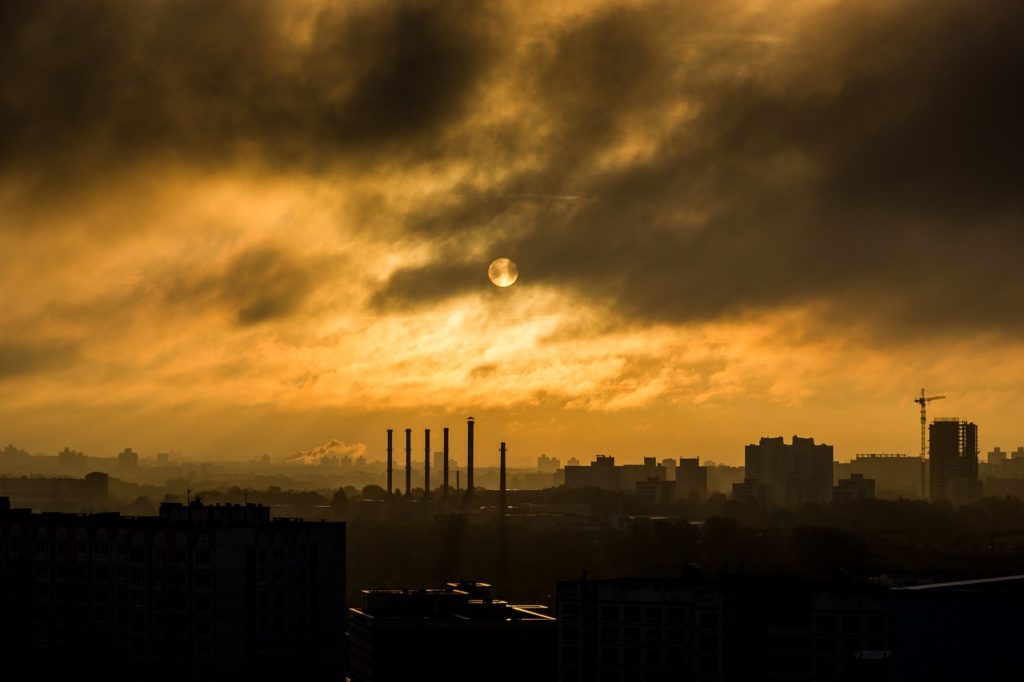
Why The Polar Vortex Is Increasing In Strength
 The map to the right shows the polar vortex centered near the North Pole and projected at 50mb, which is in the middle of the stratosphere. The concentric rings over the Arctic and the associated cool shading represents the current strong, stable polar vortex, which continues to drive a persistent pattern today and will continue through the latter portion of November. As previously highlighted, the polar vortex, which resides in the stratosphere, (the level of the atmosphere just above the lowest level) is connected to, or in phase with, the the lowest level of the atmosphere, the troposphere (where the majority of the weather occurs). In this situation, we say the atmosphere is “vertically stacked”, or the stability of the stratospheric polar vortex is causing the circulation in the lowest level of the atmosphere to become more stable, and in doing so, confining the coldest air at the surface to the Arctic. As a result, little cold air can escape from the Pole at the surface, thus keeping temperatures, particularly in the eastern U.S., well above normal. This is the reason for the current and projected highly positive Arctic Oscillation (AO).
The map to the right shows the polar vortex centered near the North Pole and projected at 50mb, which is in the middle of the stratosphere. The concentric rings over the Arctic and the associated cool shading represents the current strong, stable polar vortex, which continues to drive a persistent pattern today and will continue through the latter portion of November. As previously highlighted, the polar vortex, which resides in the stratosphere, (the level of the atmosphere just above the lowest level) is connected to, or in phase with, the the lowest level of the atmosphere, the troposphere (where the majority of the weather occurs). In this situation, we say the atmosphere is “vertically stacked”, or the stability of the stratospheric polar vortex is causing the circulation in the lowest level of the atmosphere to become more stable, and in doing so, confining the coldest air at the surface to the Arctic. As a result, little cold air can escape from the Pole at the surface, thus keeping temperatures, particularly in the eastern U.S., well above normal. This is the reason for the current and projected highly positive Arctic Oscillation (AO).

The image above shows the vertical cross section from the surface to the stratosphere over the Arctic, with observations to the left of the black line and forecast to the right. The cooler shading represents strong and stable circulation over the Arctic, where the coldest air becomes trapped. Note that, on the black line (current conditions), the cool shading extends from the top of the diagram (stratosphere) to the bottom (surface). This depicts the vertically stacked atmosphere we are talking about. In other words, the strong, stable circulation associated with the polar vortex in the stratosphere is connected to, and enhancing, the strong, stable circulation at the surface over the Arctic. Furthermore, the atmosphere is projected to remain vertically stacked through the latter portion of November, meaning the polar vortex will remain stable and strong. As a matter fact, the polar vortex is projected to intensify in the coming weeks, which will strengthen the connection between the polar vortex and the surface. So, why is this the case and how do we know the polar vortex will remain stable?

The image above shows the wave activity flux (WAF) over the mid-latitudes (40 N to 80 N) in the same framework as the previous image. The only way to dislodge or to perturb a strong stable polar vortex is by high wave activity flux from the troposphere (lowest level of the atmosphere) into the stratosphere (next level up where the PV resides). In the image above anomalously low wave activity flux is represented in the cool shading and high flux is the warm shading. The current conditions on the black show anomalously low WAF, which indicates that there is little to no forcing to disrupt the PV and its connection to surface weather. Furthermore, WAF becomes even lower as we move into the forecast period to the right of the line, meaning that there will be even less force opposing the strong stable PV. As a matter of fact WAF will be so low in November that it will be approaching historically low territory for this time of year. Bottom line, the PV currently has a strong connection to surface conditions, which will continue through November. Furthermore, the reason the PV will remain strong and stable is there is little to no force that opposes or weakens the PV due to the anomalously low WAF.

The persistent pattern associated with the vertically stacked polar vortex features broad warmth skewed toward the eastern half of the U.S. The temperature outlook to the right shows this warmer skew through the 15 day period. The most anomalous warmth will come in the next five days, which will span the majority of the eastern half of the U.S. Temperatures from Chicago to the East Coast will be in excess of 10 degrees above normal in many locations. The only region that will experience below normal temperatures during this time is the western third of the country, as a trough of low pressure makes its way into the region. Temps, however, will only be modestly below normal given the strength of this trough. Beyond the first five days, temps will continue to be the warmest across the center of the country with the greatest warmth centered over the Midwest. The only cool region nationally will shift from the western third of the country in the 6-10 day period to the Southeast in the 11-15. This will be on account of a transient storm systems or a fast moving trough of cool air and cloudy conditions transitioning across the country. Beyond the 11-15 day period, our forecast skew remains 70/30 warm/cold for days 16-25 across the Midwest-East. Please note, that a 70/30 warm skew is the highest that we have ever issued and are likely to issue in the future. The strong, stable polar vortex is the leading variable driving our warm skew across the lower 48. The remaining list of variables pointing warm remains overwhelming including the extremely positive AO and NAO, tropical convection, our TempRisk Apollo model, persistence, extrapolation of the 15-day forecast, etc. Furthermore, earlier this week, we maintained the warm projections where the Midwest was slightly warmer compared to the previous run.
Shocking Heat Records
The warm global state observed over the summer has continued into the fall. Central Park in New York City just recorded its warmest August-October on record in the 140 years that weather data has been collected. With the threat of persistent and stable warmth over the eastern half of the U.S. in November, this record could extend from August through November. Elsewhere, in Tallahassee, FL, Sunday’s high temperature of 88°F and low of 75°F both tied the warmest ever recorded there in November. Furthermore, the day’s average of 81.5°F surpassed the November record of 80.5°F set in 1982 (records date back to 1892).
Across the pond in Europe, an unusually strong ridge of high pressure has sent temperatures soaring. The United Kingdom saw its warmest November temperature in more than a century of official records, as the mercury climbed to 22.4°C (72.3°F) in Trawscoed, Wales, surpassing the previous record of 21.7°C (71.1°F) set in Prestatyn, Wales on November 4, 1946. Furthermore, Finland saw its warmest November temperature on Monday of 13.3°C (56.0°F) at the town of Jomala, which held the previous national record of 13.0°C (November 12, 1999). Last, the town of Sunndalsøra, Norway, which is less than 300 miles south of the Arctic Circle, reached at least 64°F on Monday.Overall, global warmth continues to be the theme in 2015 with no change in sight.



